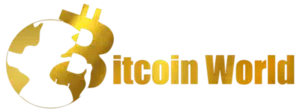The European Union is stepping up its game in the global technology race. In a move signaling a significant shift in approach, the EU Commission is actively assessing risks and mulling over export controls on critical technology sectors. And guess what’s topping the list? Artificial intelligence (AI) and semiconductor technologies! This isn’t just about internal policy; it’s a strategic play on the global stage, reflecting a growing awareness of technological power and security.
Why is the EU Suddenly Focused on Tech Export Controls?
Think of it as the EU taking a closer look at its tech treasure chest and asking, “Who gets to play with these toys?” According to a recent press release from the Commission, this initiative is driven by concerns around:
- Transformative Nature of Technologies: AI, advanced semiconductors, quantum, and biotechnologies are game-changers. They’re not just incremental improvements; they’re fundamentally reshaping industries and societies.
- Civil-Military Fusion Risk: The same technologies powering your smartphone could also enhance military capabilities. The EU is wary of technologies blurring the lines between civilian and military applications, potentially falling into the wrong hands.
- Human Rights Concerns: Certain technologies could be misused to violate human rights. The EU is keen to prevent technology from becoming a tool for oppression.
These aren’t just hypothetical concerns. The EU is responding to a changing global landscape where technological prowess is increasingly intertwined with geopolitical influence and security.
Which Technologies Are in the EU’s Crosshairs?
On October 3rd, EU officials pinpointed four key areas for in-depth assessment. These aren’t random choices; they represent sectors where the EU sees both immense potential and potential vulnerabilities:
- Artificial Intelligence (AI): From machine learning algorithms to sophisticated AI systems, this field is revolutionizing everything from healthcare to finance.
- Advanced Semiconductor Technologies: The backbone of modern electronics. These are the chips that power our devices, data centers, and increasingly, AI systems themselves.
- Quantum Technologies: Harnessing the bizarre world of quantum mechanics for computing, sensing, and communication. This is still largely in its early stages but promises revolutionary advancements.
- Biotechnologies: Innovations in biology, including genetic engineering and biopharmaceuticals. This field holds immense promise for health and medicine but also raises ethical and security questions.
These technologies are not just about economic competitiveness; they’re about strategic autonomy and security in a complex world.
Europe’s ‘No More Naivety’ Stance: What Does it Mean?
Thierry Breton, the EU Commissioner for the Internal Market, didn’t mince words. He stated this move is an “important step for EU resilience,” emphasizing,
“We need to continuously monitor our critical technologies, assess our risk exposure and – as and when necessary – take measures to preserve our strategic interests and our security.”
He went further, declaring, “Europe is adapting to the new geopolitical realities, putting an end to the era of naivety and acting as a real geopolitical power.”
This isn’t just bureaucratic jargon. It’s a clear signal that the EU is shifting from a purely open-market approach to a more assertive stance on technology. The “era of naivety” suggests a past where perhaps the EU was less concerned about the potential risks associated with technology transfer. Now, the focus is squarely on strategic interests and security.
What’s Next? The Timeline and Potential Outcomes
The EU Commission isn’t rushing into decisions. Here’s the roadmap:
- Risk Assessments by End of Year: Experts will be working to thoroughly assess the risks associated with the four identified technology areas. This involves analyzing potential vulnerabilities, security implications, and economic impacts.
- Engagement with EU Member States: The Commission will collaborate with the 27 EU member states to conduct collective assessments. This ensures a unified approach across the bloc.
- Spring 2024: Results and Initiatives: By Spring next year, we can expect to see the results of these risk assessments and any concrete initiatives that stem from them. This could include specific export control measures, investment restrictions, or other policy interventions.
This isn’t happening in a vacuum. This EU initiative follows the June 20th enactment of the Joint Communication on European Economic Security Strategy. This broader strategy is built on pillars of “protection against risks” and boosting European competitiveness. Export controls are just one tool in this larger toolkit.
Echoes Across the Atlantic: US Tech Export Restrictions
The EU isn’t alone in this thinking. The United States has also been actively evaluating export risks in similar tech sectors. Notably, the US has recently tightened restrictions on the export of high-level AI semiconductor chips to China. This move reflects similar concerns about technology transfer and national security.
Furthermore, many US lawmakers are pushing for legislation that would mandate companies to report investments in Chinese technologies. This highlights a growing trend of scrutiny over technology investments and flows.
A Global Ripple Effect?
The US decisions have already sparked countries overseas to reconsider their own approaches to AI technologies. The EU’s current move further solidifies this trend, suggesting a potential global shift towards more cautious and strategic technology policies.
In Conclusion: A New Era of Tech Geopolitics?
The EU’s exploration of export controls on AI and semiconductor technologies is more than just a regulatory update. It’s a sign of the times. We’re entering an era where technology is not just about innovation and markets; it’s deeply intertwined with geopolitics, security, and strategic influence.
As the EU conducts its risk assessments and formulates its policies, the world will be watching closely. The outcomes could reshape the landscape of global technology trade and set new precedents for how nations balance economic openness with strategic security in the age of AI and advanced technologies.
Disclaimer: The information provided is not trading advice, Bitcoinworld.co.in holds no liability for any investments made based on the information provided on this page. We strongly recommend independent research and/or consultation with a qualified professional before making any investment decisions.


